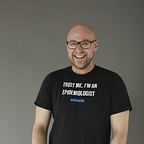How To Treat 1,000,000 People With Diabetes
Changing the way we do medicine
This blog is about some of my research published recently in the Journal of Integrated Care which you should totally read if you have time and like words that are more science-y in nature. Seriously, have a read it’s great*.
Over the last 30 years or so, the world has developed a huge problem. This time I’m not talking about global warming, bad science reporting or Donald Trump.
I’m talking about diabetes.
Rates of diabetes worldwide have skyrocketed in the last few decades, and nowhere is this more true than in Australia. We’ve gone from a rate of 1.5% in the early 90s — high, but manageable — to almost 9% of the population today. That means that about 1 in 10 people in Australia are currently suffering from diabetes.
And the rates are only predicted to rise. By 2030, we might be looking at a society in which 1 in 6 or even 1 in 5 people have diabetes. That’s a pretty unsustainable figure.
Nowhere is this more true than in the area I work: Western Sydney. It’s a place of amazing cultural diversity, but also a lot of socioeconomic disadvantage and obesity. There are a lot of people who struggle to lead healthy lives, because the environment that they live in makes it harder to, say, access healthy food or exercise regularly.
All in all, we estimate that between 12 and 15 percent of the population in Western Sydney has diabetes. That’s more than 100,000 people in an area serviced by just 4 public hospitals.
And sadly, it’s just not possible to treat them all.
Which is why my team has come up with a new way to help people with diabetes. And it works.
See Your GP
Part of the problem is that people don’t come to hospital very often — only about 1% of people go to the ED each year. What this means is that the specialists — endocrinologists in this case — who would traditionally be in charge of treating the disease almost never see the patients that they need to.
But virtually everyone goes to see their general practitioner.
So we had an idea. What if, instead of the traditional ideas of increasing access to specialist services — either by training more specialists, using innovative consult methods like telehealth, or just increasing funding to the hospitals — we did something different?
We decided to train GPs to handle diabetes.
Now, GPs already do a lot of management of diabetes, but it’s a fast-paced area with new drugs and treatments coming out all the time. Our hypothesis was that patients would do better if we did consult sessions with a team of specialists from the hospital sitting in the room with both the GP and the patient, both helping out the patient with their diabetes issues and helping the GP to get better at treating diabetes at the same time.
All for virtually no additional cost.
So what did we find?
The Study
In short: it works.
Basically, we did two things in our evaluation. We looked at how individual patients did when we conducted these joint consultations, or case-conferences, with them and their GPs. And at the individual patient level, there were a wide variety of benefits: this is not surprising, because they got to see a specialist. If there was no benefit, we’d be a bit worried!
The surprising thing is that, after 3 years, these benefits were maintained. Meaning that we can have a long-term impact on individual people with these case-conferences from just one 30-minute session!
But that’s not the main benefit by a long shot.
Remember, what we’re really looking at is treating 100,000’s of people. And doing it with GPs, rather than specialists.
And what we found was that, in the 6 months after doing these case-conferences, on average GPs improved on a number of markers of their management of diabetes.
Essentially, GPs were treating the disease better than before.
What This Means
This isn’t going to change the world overnight. There are a number of important caveats to our study: it’s largely observational, which is why we’re currently working on a more rigorous randomized trial to determine if all these benefits were due to the intervention or something else, and also we didn’t look at the long-term benefit to GPs, which means we’ll need to follow-up again in a couple of years.
But in general? It means that we can treat diabetes without massively expanding funding. It means that we can take specialists, use them better in the health system for a very small additional cost, and help hundreds of thousands more people than before.
Everyone knows how hard it can be to get in and see a specialist.
With our new methodology, we can train GPs to do the basic management just as well, leaving only the complex and difficult patients for the specialists. At our hospital clinic, we’ve seen a huge reduction in waiting lists, because instead of seeing all the people who are doing well and just need a little bit of help, the specialists are only seeing the people who really need it.
How can we treat the millions of people who will get diabetes in the next decade?
By changing the way we work.
Otherwise, we will leave thousands without access to care.
If you enjoyed, follow me on Medium, Twitter or Facebook!
And again, here is the study: https://www.emeraldinsight.com/doi/full/10.1108/JICA-09-2017-0029
*If you are having trouble accessing the study, you can either email me or check out sci-hub which is a totally illegal way of quickly and easily accessing academic literature that I would never recommend because it’s ~technically~ illegal and also just so incredibly easy to use.
